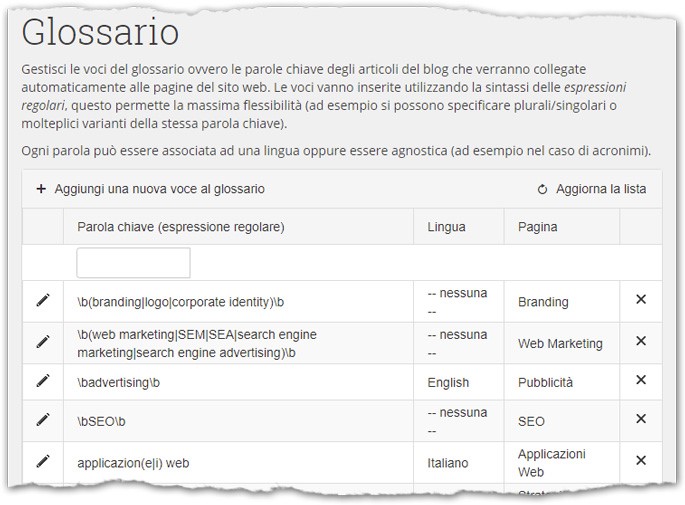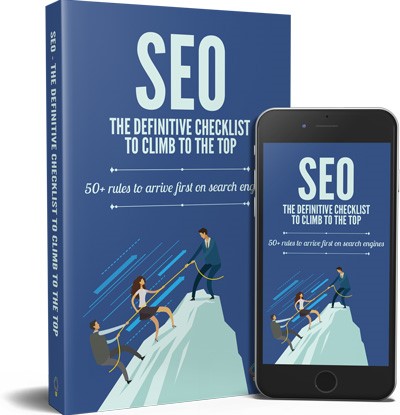The SEO (search engine optimization) trick called "the middleman" solves
a very common problem in corporate websites with excellent results.
I myself applied it many times and I always got it great results in
a short time.
The trick I'm going to explain to you
this year has saved the positioning of one of our clients.
In short, a very fierce
competitor had overtaken my client by creating a PBN (Private Blog
Network). PBNs are black hat techniques, that is prohibited and penalized
by Google, but we’ll talk about it another time.
At that point I had two solutions: either to create a PBN (with the costs that this
entails) or to apply the middleman method, which by the way is a white hat technique,
that is absolutely lawful.
Let's start by understanding what problems the "middleman" can
solve.
The problem of commercial pages
The pages of corporate websites (but also of other types of sites) are divided
substantially into 3 categories.
- The main page, the so-called home page of the site.
- Commercial pages: the internal pages that describe the products/services
of the company, those in which we hope with all our heart that our visitors
go.
- Informational pages: are those that offer interesting and
non-self-referential content, typically blog articles.
As is well known, the more a page is referenced by other websites, the
more it is placed at the top by search engines. The problem is that when
someone wants to quote your company, she does it by linking the home page. No one
would ever link a commercial page.
The result is that if you have been good you will find the main page positioned
well in the SERP (Search Engine Result Page), but the same thing cannot be said
for all the other pages of the website.
This is a problem especially if your company offers many products and therefore
cannot be all listed and gutted down to the smallest detail on the home page of
the site.
For example, if your company produces clothing, maybe your home page is also positioned
well for the word "clothing", but your commercial page that talk specifically about ties is probably relegated to the last positions
in search engines, precisely because nobody cites it on their websites.
This is why it is very important to have a corporate blog, thanks
to it you will be able to write articles that use the keywords of your commercial
pages. If you write interesting and not shamelessly advertising articles, then other
websites will begin to mention your informational pages.
However, the problem remains that at this point in the search engines there will
be your homepage and blog articles, but commercial pages will continue to be missing.
I will now show you two ways to index commercial pages, one manual and one fully
automatic.
Did you like this article up to here?
Before you continue, follow us on our LinkedIn page pressing the button here below!
In this way, we'll be able to keep you updated on digital strategies not only with our posts, but also with the best articles that we collect around the web.
The middleman method
The method consists in creating an informational page, placed halfway between
who will quote it and the commercial page we want to index. In doing so, part of
the so-called link juice acquired from the intermediate page will also
be inherited by the commercial page by transitive property.
Let's take the example of the site that sells clothing to explain the method
in practice.
- Suppose we want to place on the search engine the page where the ties we
sell are listed. As already explained, unfortunately nobody links to our page
dedicated to ties.
- Let's create a series of articles in our blog that teach how to tie
the ties in many ways. In each article we could give a hint of history, list
the movie stars that made that particular tie knot famous, show beautiful photos
of models and maybe embed explanatory videos that teach how to tie a tie.
- Within each of the articles, at the first occurrence of the word "tie"
we will put a link to our commercial page dedicated to ties.
- If our series of articles is successful, we will probably get many external
links and this will contribute to their popularity on search engines.
Technically what we have created is a series of internal links to the
commercial page starting from the blog articles.
When Google scans a site and sees many internal links that start from well-positioned
pages and all end up on a given page (the page of the ties for sale), it understands
that the final page is important and significant for the keyword in question.

It is therefore a matter of doing some editorial work.
Can these internal links be created automatically?
This is a legitimate question, especially if you have a blog with many articles
already written.
The answer is yes, especially if you are using the Infrared
CMS.
How to automate internal links
I honestly don't know if other CMSs or any plugins have similar features,
here I'll show you what I developed myself.
Among the administrative tools of the Infrared
CMS there is the command Glossary.
Using regular expressions you can define your keywords (in all possible variants)
and link them to the commercial pages of interest. When rendering any blog article,
the system will automatically search for keywords within the article and link their
first occurrence to the chosen page. I have chosen to only link the first occurrence
of each glossary entry to avoid the negative effects of keyword stuffing,
that phenomenon whereby if Google sees too many keywords, it judges the page as
spam.
It is beyond the scope of this article to explain regular expressions, but on the
Internet you will find many articles that will do it for me.

To give you a practical example, you can also see it in the image above, in the
glossary I created the expression b\SEO\b and I linked it to the page of this site that advertises search engines optimization services. The symbols you
see in front of and behind the acronym SEO are to tell the system that it has to
look for occurrences of the whole SEO word.
You can also see the result in this article.
If you go back to the beginning you will see the first sentence (The SEO…)
has the word SEO linked to the commercial page of the same name. The link was made
automatically, you will also recognize other links around the blog, because I chose
to display them with a dotted underline.
That’s all.
I recommend you to implement the middleman SEO strategy as soon as possible, it
will allow you to make the most of your company blog and you will find indexed in
a short time pages that you never thought you would ever see in the top positions
of search engines.
Let me know what results you got.
Download the FREE eBook

Download for free
Download the free SEO checklist and learn how to optimize your website and outperform the competition.
You will find over 50 guidelines collected and explained to better position you on search engines.
The security requirements that Google recommends and promotes, the mistakes you need to avoid at all costs, and much more.